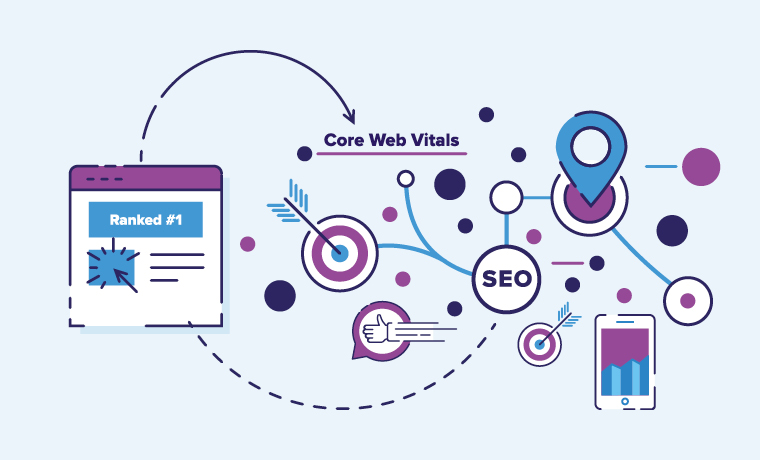Beginning in 2021, the way users interact with and experience your website’s pages will influence rankings. Google’s latest algorithm update also includes a new page experience signal called “Core Web Vitals,” which will accommodate user experience in more depth.
We outline what this new search ranking criteria looks like and why it’s important.
What’s Included in Page Experience?
Page experience signals measure aspects of how users “perceive the experience of interacting with a web page.” These signals include:
- Mobile friendliness: Your page is responsive and mobile friendly.
- Safe browsing: There are no security issues for a user to be concerned with and no malware present.
- HTTPS: You have a security license on your page, making it secure.
- Intrusive interstitial guidelines are followed: Mobile content is easily found and readable (pop-ups, text size, and other features are accounted for accessibility).
- Core web vitals: The page provides a good user experience in regard to loading speed, interactivity, and visual stability.
Optimizing for page experience allows usability across a variety of devices and browsers. It also makes browsing more enjoyable by providing users with a sense of security and reducing potential points of friction.
What Are Core Web Vitals?
Google is introducing this new metric as part of measuring a user’s on-page experience. Core Web Vitals are user-centered metrics that quantify key aspects of a user’s experience as they land on and interact with a web page.
Largest Contentful Paint (LCP)
LCP is the time it takes for a page’s main content to load. An ideal LCP measurement is 2.5 seconds or faster.
First Input Delay (FID)
FID is the time it takes for a page to become interactive or for a user to be able to scroll, press buttons, or utilize other elements on the page. An ideal measurement is less than 100 milliseconds.
Cumulative Layout Shift (CLS)
CLS is the amount of unexpected shift of visual page content. This is what occurs when a page is loading and you begin to interact with it. Then, all of a sudden, you lose your place or accidentally click a button because the page will “jump.” Annoying, right?! An ideal measurement is less than 0.1.
A Catch: Don’t Forget Content!
Google made an explicit point when announcing this algorithm update that high-quality, great content will still rank highly despite a poor page experience.
“While all of the components of page experience are important, we will rank pages with the best information overall, even if some aspects of page experience are subpar. A good page experience doesn’t override having great, relevant content. However, in cases where there are multiple pages that have similar content, page experience becomes much more important for visibility in Search,” Google wrote.
Ultimately, having an optimized page experience may give the additional weight to your site to sway rankings favorably among competitive sources. But, great content still wins in Google’s eyes.
Preparing for the Page Experience Update
Ensuring your website is up to snuff for page experience signals is recommended before the update is live. Conducting an audit for Core Web Vitals page performance is important as well. We don’t know how much this algorithm may sway SERP rankings, but it’s best to be prepared and have an action plan in place, especially for higher-ranking pages. This algorithm is set to be pushed sometime in 2021, and Google promised to give a six-month notice prior to the change.
Google’s Focus on UX
With Google dedicating more attention to how users experience and interact with web pages, it makes us question how we can better optimize our websites to make browsing easier and where algorithms may take us in the future. If load speeds and interactivity are being measured today, and will soon be ranked tomorrow, then what are other areas we can optimize to delight our users and beat Google to the punch?
